Vented vs. vent-free gas fireplaces
Primary portion of the residence is main floor, apprx. 1800 sf, high ceilings (10-12'), mostly open, master bedroom, sitting room with foldout sofa, kitchen open to living area and dining room, study w/ murphy bed.
Fires for the ambiance, but also for heat. Have large propane tank, but want highest efficiency possible. Can tolerate "glassed-in" facade in master, but want more of a realistic fire look with no glass for living area and sitting room/bedroom #3
Living room could share a chimney with outdoor fireplace behind (wood-burning) if vented is the way to go. In the Northern VA area so it gets cold, but not frigid. Only complaint with one of the vent-free I currently have is what appears to be soot and a bit of dampness. The other vent-free is great. Thanks for any and all advice.
Comments (42)
LeMaster Architects
10 years agoAlthough Virginia allows vent-free fireplaces, I would definitely go with a direct-vent product. Although not quite as efficient, they are safer.2manyhorses thanked LeMaster ArchitectsRelated Professionals
Garden City Interior Designers & Decorators · Glenbrook Interior Designers & Decorators · Lomita Interior Designers & Decorators · Panama City Beach Architects & Building Designers · Piedmont Kitchen & Bathroom Designers · Owensboro Furniture & Accessories · Glenvar Heights Furniture & Accessories · Wakefield Furniture & Accessories · Beloit General Contractors · Channelview General Contractors · Dallas General Contractors · Deer Park General Contractors · National City General Contractors · Norman General Contractors · Waianae General Contractorsmfwolfe
10 years agoWe had an unvented gas fireplace for years. There is not a safety issue. With all the regulations in our lives would fireplaces that kill people be readily available? No. But there are issues: first the walls and ceiling around the fireplace will begin to build up some soot and there will be a slight, or if you are sensitive, more than slight odor. And, probably most significant in VA, there will be an increase in humidity due to the water in the gas. Propane has more water in it than you would think.
Venting makes for a much more liveable house.2manyhorses thanked mfwolfeUser
10 years agoThe safety of a vent-free gas fireplace depends on the entire health of the house. Most houses have enough air infiltration to handle the make-up combustion air for a single vent-free fireplace, but mechanical ventilation is required for energy efficient houses regardless of whether there is a fireplace or gas cooktop. Regardless of the "vent-free" label on the fireplace, the UL approval and installation instructions DO REQUIRE sufficient combustion air that is usually supplied by the central HVAC system. Adding one more ventless unit may be the straw that broke the camel's back, and make your living environment unhealthy. A qualified HVAC specialist needs to look at this before choosing a ventless model. At this point, a blower door test may be necessary to get an accurate assessment. Don't believe anyone that just comes in and looks around and says "no problem". There are too many calculations that need to be done, and a LOT of considerations behind the technology to make this work. Many areas of the US have banned their use because after they are installed properly, someone comes along and tightens up the building for energy efficiency, and unknowingly cuts off the make-up air required by the fireplace, UL, and code.2manyhorses thanked User2manyhorses
Original Author10 years agoThanks for all the input, I've definitely decided to go with a direct-vent fireplace. Are there any units that do not have a solid glass front? I really want it to look like a "real" fireplace.User
10 years agoNot that this can't change tomorrow, but to the best of my knowledge, the gas fireplaces have to be more or less sealed for energy efficiency. They do make a "log set" for a convectional fireplace, but the damper in the flue either needs removed or permanently blocked open by most codes. This becomes a real big energy waste as heat goes out the chimney 24/7 even when you are not using it.COASTROAD Hearth & Patio
9 years agoIf there is one subject that there are a lot of opinions on, it is this one.
I see you've already made up your mind, but this information might help other folks in your situation.
We always recommend a direct vent gas fireplace where possible. The unvented models, although essentially 100% efficient, cause indoor air quality issues primarily due to excessive water vapor, not carbon dioxide (which is harmless), not carbon monoxide (because the CO produced is minimal, less than 15 ppm). Also, an improperly installed model can cause sooting problems, as mfwolfe mentioned.
The other issues are associated with odors. Since unvented fireplaces use room air for combustion, anything in that room air, including off-gassing carpet formaldehyde, new paint, chemical air fresheners or household cleaners will change the smell in the room when those chemicals go through the burner. The worst case scenario is probably a new home, where the air is full of chemicals from off-gassing.
All direct vents have sealed glass fronts. There are some tricks to making the glass disappear, such as in the photo below, but as Fred S says, they've got to be sealed to work properly.
Just FYI, the calculation for anything other than a direct vent appliance, including a standard water heater or unvented fireplace, is 50 cubic feet of free air per 1000 BTUs of fuel input.
Also, FYI, gas appliances, including direct vent and unvented models, are not UL listed or tested, they're ANSI listed.User
9 years agoANSI is a standard, not a testing laboratory.
" ANSI governs several accreditation* programs for certification activities including products, laboratories, systems, and personnel. ANSI does not conduct tests or technical evaluations of products, systems or services. Similar to the accreditation of standards developers, ANSI accredits other organizations to serve as third-party product, system and personnel certifiers."
http://www.ansi.org/about_ansi/faqs/faqs.aspx?menuid=1
Gas appliances must meet ANSI standards and be installed according to National Fuel Gas Code ANSI Z223, also known as NFPA 54. Gas appliances must be tested, certified, or approved by a nationally recognized testing laboratory such as UL.
http://www.ul.com/global/fra-ca/pages/offerings/industries/appliancesandhvac/gasoilsolidfuel/hearth/?null
http://ulstandardsinfonet.ul.com/scopes/0127.html
Other laboratories include but are not limited to CSA and AGA
http://www.technick.net/public/code/cp_dpage.php?aiocp_dp=guide_safetymarksCOASTROAD Hearth & Patio
9 years agoSorry if that wasn't clear.
You are correct, gas appliances are listed and tested to an ANSI standard, not tested by ANSI. Most gas appliances are tested by OMNI, Warnock Hersey or another nationally known lab.
CSA, AGA and RADCO also set standards for listing and testing gas products, as you mentioned. It is up to the local authority whether or not to accept these listings in the absence of an ANSI listing.
And then there are unlisted appliances, such as gas logs over 100,000 BTUs, which do not meet any standard, but may be accepted by a local jurisdiction if otherwise installed to NFPA54, the national gas code.
There is no UL standard for gas fireplaces. Occasionally, gas appliances that are equipped with electrical components are listed and tested to a UL standard (Heat & Glo is one company that does this), which is helpful when a code requires a UL listing for installation, such as in a bathroom.
Factory-built WOOD fireplaces, on the other hand, are all listed and tested to UL 127.mewolfe2003
9 years agoIf there is a solid glass front on a vented fireplace, how will it heat your home if there is a power outage?COASTROAD Hearth & Patio
9 years agoHow does your car get hot inside on a sunny day when all of the windows are closed? Glass does little or nothing to prevent the transmission of radiant heat.
Some high-efficiency fireplaces are equipped with ceramic glass that does a better job than nothing at all.mewolfe2003
9 years agoMakes sense. Do they have doors that could open if I wanted to roast marshmallows or hot dogs with the grand kids? Probably sounds silly, but I have always wanted to do that in a fireplace in my house in the winter.COASTROAD Hearth & Patio
9 years agoIf that is a priority for you, you should have a wood burning fireplace. Gas burners do not respond well to the occasional dropped marshmallow. Some of our clients opt for a gas fireplace inside and a wood fireplace on the porch, which I would say is the best of both worlds.delyanks
9 years agoMy parents have had a vent-less for almost years. I haven't seen any problems. My father has always kept a carbon monoxide detector right next to it. However, the argument against it makes perfectly good sense. There is just no physical proof in the real world.COASTROAD Hearth & Patio
9 years agoI would have to disagree somewhat with the "no proof in the real world" statement. There have been a number of issues related to unvented gas products, including health concerns, indoor air quality issues and pretty serious soot damage to homes.
Not everyone has those issues, but they are very real.User
9 years agoVentless just means that it is not independently ventilated. The devil is in the details. "Ventless" still require whole room ventilation, whether it is through cracks in a building's envelope in an older home, or integrated into the HVAC system in more energy efficient homes. If the room doesn't have adequate ventilation, there will be problems, and there is plenty of proof of this in the real world. Your parent's house could just be one of the exceptions where everything still works properly. Maybe your father is smart enough not to weatherize the house too tightly while the ventless fireplace is there.50yearsold
9 years agoWe just bought a house that has to direct vent fire places using LP gas. I was just online to see if it can be converted to vent free to help keep the house warm as our LR has 32 ft ceilings and needs a bit of help. I have noticed soot marks around the house. I didn't know what they were at first but that is what it looks like. We do not have glass on the LR fire place and I close the vent to keep the heat in when not in use. Should I be keeping this open all the time? And when you turn it on should you keep the glass closed? Should I have glass put on the LR? We bought the house with the high ceilings thinking the gas was great to help with the heat pump but all the heat is going right up the chimney and then some. Any ideas?COASTROAD Hearth & Patio
9 years agolast modified: 9 years ago1. Direct vent gas fireplaces can not be converted to unvented gas fireplaces. And, hearing you describe your situation, including the tall ceilings, I would not recommend an unvented fireplace.
2. All direct vent fireplaces have fixed glass fronts, and they do not have dampers, so I'm pretty sure you don't have a direct vent fireplace in your Living Room. I'm guessing you probably have a wood burning fireplace with gas logs installed.
3. If you have a fireplace with operable glass doors, the doors should be open all the way while you are operating your fireplace, unless the installation manual states otherwise.
4. A real direct vent fireplace can be very efficient, will not suck heat out of your house, will not cause soot, and will produce a good amount of radiant heat to keep the area at floor level warm and cozy instead of sending hot air up to your ceiling.
I would suggest contacting a local fireplace professionals to see what your options are. If you are in the USA, you can search here: http://nficertified.org/pages_consumers/consumers-1.cfmUser
9 years agoThis isn't an endorsement of any particular brand, but just the first direct vent fireplace insert I found to show you what the difference is.
http://www.regency-fire.com/Products/Gas/Gas-Inserts/U32.aspx
A ventless fireplace may not even be allowed by code where you live. Even where they are allowed, they are not so much meant for heating, as ambiance. Something with enough BTUs to heat would use up the room oxygen too fast, and OTHER makeup air would need to be brought in from outside.50yearsold
9 years agoWow, we do not have glass doors nor a curtain on the fire place. We do have the damper. should I keep the damper open all the time with the pilot lite going? It has a electric ignition on it. The bed room I seem to smell gas and it has glass doors so I shut them and open the damper. The house is 15 years old. I don't know if it originally had wood burning as the insert is made my Marco and says use wood only. The seller was very nice but did tell us a lot of untruths so I really don't know what is going on with the house or if they were just trying to sell it quickly bc it is not as efficient in the heating as they told. Is the logs sold with the surround or can they be purchased separately? Maybe the surround was for wood and they put the gas in? I just want to be safe and worried now with the soot on the walls not I know what it is. he had told us to shut the damper half way to keep the heat in and my carpet installer told me no way to do that.. I will look up the site you gave me Fred S. and Coastroad Ii appreciate all the info. I live out in the sticks now and everything is a little off out here and from Chicago I am use to pros even though some are pro swindlers lol. Thanks though :)User
9 years agoSomething sounds off. Maybe you have a gas lighter for wood logs? Can you post a picture or two of this?User
9 years agoIf you have a damper, then that suggests wood logs. If it says for wood only, then you shouldn't be having a gas insert in there.....COASTROAD Hearth & Patio
9 years agolast modified: 9 years ago@50YearsOld, I understand your skepticism after getting some bad info from the seller.
If you can find the model numbers on those units, and/or post photos like Fred said, we should be able to identify what you have. Marco made a few gas models, but they were best known for "builder" wood fireplaces, and didn't make anything with electronic ignition that I am aware of, so my intuition is that the Marco is a wood burning fireplace with vented gas logs, that happen to have electronic ignition.
Don't ever partially close your damper with vented logs. Sooting is a risk, as you know, but carbon monoxide poisoning is a much greater danger.User
9 years agoI don't understand this statement.
"should I keep the damper open all the time with the pilot lite going? It has a electric ignition on it."
With an electronic ignition, it shouldn't have a pilot light going all the time?User
9 years agoIt sounds like a valve is not functioning properly.
The sequence I usually see is that when you turn it on, the pilot valve opens and the electronic spark lights it, then when heat is sensed, the main burner turns on. When the unit is turned off, the pilot light is also shut off.Fireplace Creations By BMC
8 years agoWe at Fireplace Creations have been in business for over 26 years in the hearth industry. We have removed hundreds of ventfree fireplaces & logs and replaced them with directvent gas fireplaces and inserts. This burn season we replaced well over 50 ventfree fireplaces. between 25 & 30 ventfree gas logs and to be fair 2 sets of vented gas logs . all were replaced with directvent products. We do have before and after pictures . The truth are facts are ventfree products are not for primary. You must provide proper combustion & ventilation air . All ventfree products should be sized correctly . [ THIS IS USUALLY NEVER DONE ] They should only be used no more than 2 to 4 hrs per day. You should keep a couple of windows open 1 to 2 inches when using. Bottom line Ventfree products are not good for our Health & home. Always use directvent Gas products . This way you elimate all the concerns of using Ventfree Roomvented Lungvented products
Perry BumpersFireplace Creations
pbumpers_bmc100
7 years agoCheck out www.fireplacecreationsbybmc.com to see pic of some of the ventfree fireplaces we tore out of consumers homes because of problems in 2015
B G
7 years agolast modified: 7 years agoI wonder about this. If ventless gas fireplace exhausts lots of water vapor, why is this not good for a dry house in the winter? A humidifier does the same thing.
COASTROAD Hearth & Patio
7 years agolast modified: 7 years agoBG, you are exactly right. A little is good. Keeps things from drying out; keeps static electricity down.
Using an unvented fireplace for 1-3 hours a day is unlikely to cause serious water issues, unless you have an extremely tight house (e.g. with foamed insulation).
The problem is when there is too much water vapor, which can cause condensation, mold, and mildew. This usually happens when an an unvented unit is used for primary heat and operated for more than 6 hours a day. That is not the intended use for unvented fireplaces.
B G
7 years agolast modified: 7 years agoCould the homeowner just monitor the indoor humidity and let's say, if it goes over a threshold, like whatever is recommended, say 95% humidity, then the homeowner can turn off the fireplace?
The efficiency of unvented fireplaces just seems too enticing to some and I can understand why with the rising cost of energy.COASTROAD Hearth & Patio
7 years agoGood gracious. I hope indoor humidity never gets that high in anyone's home. ;-)
Let's just say that there are a number of things to consider when contemplating an unvented appliance. Some have been mentioned. Efficiency is only part of the equation.
jfransen
7 years agoLove the information here - thank you x10! Just ordered an unvented set for our woodburning fireplace from a reputable local dealer...but I have a few days to change it to vented. We preferred the look of vented and willing to accept it's inefficiencies (open damper) but thought the vented might be safer. It's a 70 yr old house, fireplace 16" deep. When burning wood some smoke smell noticable in house. I questioned whether it's venting properly, and what that might mean for gas logs. Dealer thought unvented might be safer since its flames burn cleaner than vented. Would love to hear another professional's opinion.
COASTROAD Hearth & Patio
7 years ago@jfransen, your reputable local dealer is right. If it didn't draw well with wood, it will be worse with gas (lower flue temperatures), and an unvented type log will minimize the risk associated with a poor draw on a vented log set (CO poisoning, for example).
Joe Maze
7 years agolast modified: 7 years agoJust ran across this site... I recently bought a house with a direct vent fireplace. it will burn for hours and can feel very little heat from it. About 12" away from the glass and cannot feel anymore ambient heat. Is this normal?
COASTROAD Hearth & Patio
7 years agoHi Joe - see-throughs are particularly bad for feeling much heat, but that looks like a pretty nice fireplace (Majestic Chateau or Marquis), so it might be worth having a technician look at it to see if the exhaust can be restricted to keep more heat. As far as is being "normal", most direct vent fireplaces installed are not designed to be significant sources of heat, so I guess it is normal. Some gas units, however, are great sources of heat. I heat my home with a gas direct vent model.
I find that homeowners with gas fireplaces fall primarily into two categories: the ones that think their fireplace puts out too much heat, and the ones that think their fireplace doesn't put out enough heat. There is a small minority that think their fireplace is just right. :-)
The good news is that practically any fireplace situation can be improved. Talk to a pro about your options.
u150188
7 years agolast modified: 7 years agoWe installed a ventless outside in our pergola because we live in a fire zone and wood burning was not allowed. It was also less trouble than a vented one. I wished we had a vented fireplace because the odor is so horrible with the ventless. The odor is apparently caused by unburned substances coming out the front vs. with a vented one up and out of a vent. It is also has Carbon monoxide issues as well. It caused me not to feel well. My son noticed it too while he was in the yard playing. I searched the web and found countless testimonies of people getting sick from the ventless installed in their home. My only wish is to have it removed. Not worth the risk to health or to save $. I am so surprised that the ventless fireplaces are on the market for sale. I can not believe that this is in homes of developing children and their families as well as the elderly.
COASTROAD Hearth & Patio
7 years agou1501188 - I am so sorry to hear of the issues you are having. There have been a large number of issues related to unvented gas hearth products being installed. However, the vast majority of problems have been due to incorrect installation, particularly if you are noticing any carbon monoxide. If you haven't done so already, please contact a reputable hearth specialist that can help you figure out a solution. Although your situation is bad, it is likely fixable.
pbumpers_bmc100
7 years agoIt is very common to have problems with any kind of vent free product. My company has tore out & replaced 100's & 100's VENTFREE ,UNVENTED & NO VENT WHAT EVER YOU WOULD LIKE TO CALL THEM over the years. You can go to our web site www.fireplacecreationsbybmc.com and see a big pile stacked in front of our showroom that we tore out & replaced with direct vent gas products in 2015 . You can also GOOGLE dangers of vent free to do more research. Just about no one shares the first requirement with consumers about vent free products. " BEFORE INSTALLING YOU MUST PROVIDE PROPER COMBUSTION & VENTILATION AIR. This basically means you live in your chimney. Your house will be used as a vent. all the contaminates & fumes are all in your house for you to breath. ITS JUST COMMON SENCE DONT BE FOOLED BY ALL THE BAD & MISINFORMATION THAT IS OUT THERE.
Even when VENT FREE products are installed correctly they stink, create moisture, white chalky stuff that gets all over. sticky film on windows & consumers still complaining about the fumes gives them headaches, & seems to effect there eyes nose & throat.
There are sizing guidelines for all Vent free products that are usually never followed. There are time limits on how long VENT FREE products should be used. There are many warnings that consumers are never told about all vent free products. The moisture that is created by a correctly installed unit when used to heat with is crazy. A 28,000 BTUH product can produce 4.8 gallons in your home in a 24 hr period. JUST THINK WHAT A 38,000 BTUH CAN DO. JUST THINK IF THERE ARE MORE THAT ONE UNIT BEING USED. YES YOU & YOUR FAMILY ARE BREATHING ALL THAT. DONT BE FOOLED BY THOSE THAT TRY TO SAY THE MOISTURE IS GOOD FOR YOUR HOME. The water is a byproduct & contaminate from burning a fossil fuel. No different than the water that comes from the tail pipe of your car.
PerryFireplace Creations
Bradigans
6 years agoGreat thread. I have also replaced a number of vent-into-the-house fireplaces with direct vent. Unvented fireplaces have a lot of restrictions on how, when and where to use/ install. Decorative logs in wood burning fireplaces change the fuel, but not the appliance. Like the wood burning fireplace they're installed in: they produce little net heat, if any.
I disagree that gas logs have lower flue temperatures than wood. A wood fire varys widely with btu output. It may for short periods exceed the output of the gas logs, but it will also produce fewer btus as the wood burns down. Please keep in mind that a chimney that can't contain that steady state heat output could lead to a structural fire.
Direct vent inserts and fireplaces are not the best solution for every situation, but they are the best solution most of the time. It is important to hire a professional to help with fireplace planning and installation. You're playing with fire after all.
glamothe66
5 years agoGreat thread, thanks for all of the posts. One thing I haven't seen mentioned yet are Heat Recovery Ventilators (HRV) or Energy Recovery Ventilators (ERV). I have a very tight house in the Northeast that necessitated installing an HRV and I suspect this would mitigate the health/moisture concerns associated with ventless fireplaces. Anyone with experience care to comment?
COASTROAD Hearth & Patio
5 years agoHRV and ERV systems are great for conditioning incoming outside "fresh" air, but they aren't really designed to de-humidify re-circulated air.
In the winter, incoming air is usually very dry, so it would help, but only passively and by dilution.
You would still probably need a separate dehumidifier to really control relative humidity inside the house, and that would only address one aspect of the indoor air quality issues mentioned with unvented gas products.
Thanks for reviving this long-winded thread, @glamothe66.
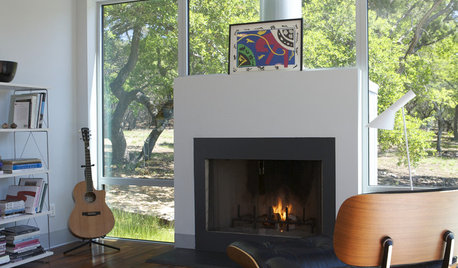
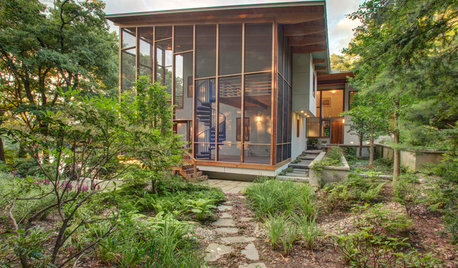



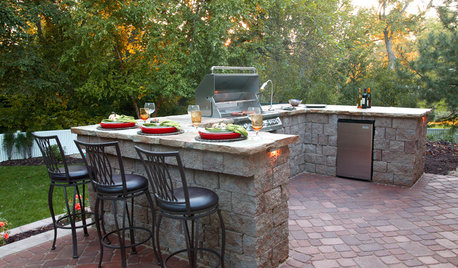
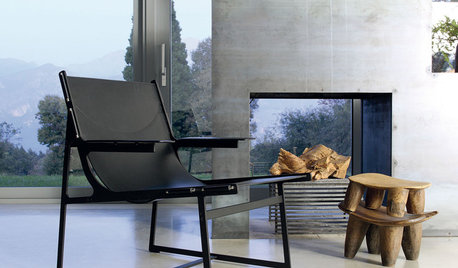
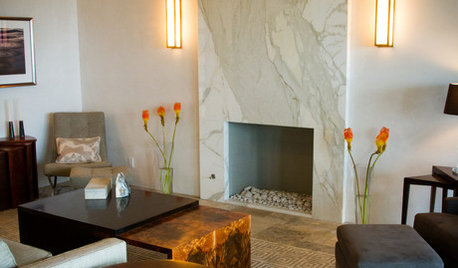
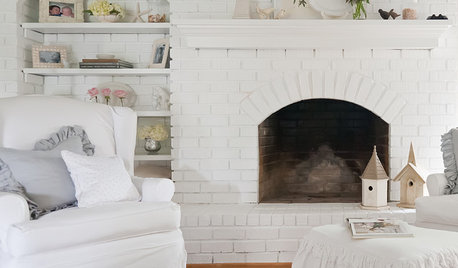
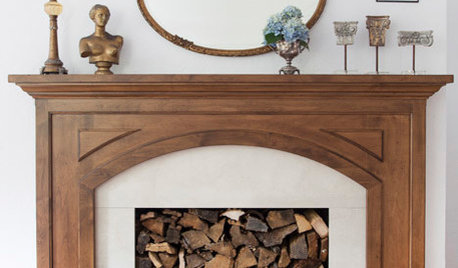










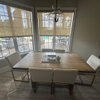

grobby